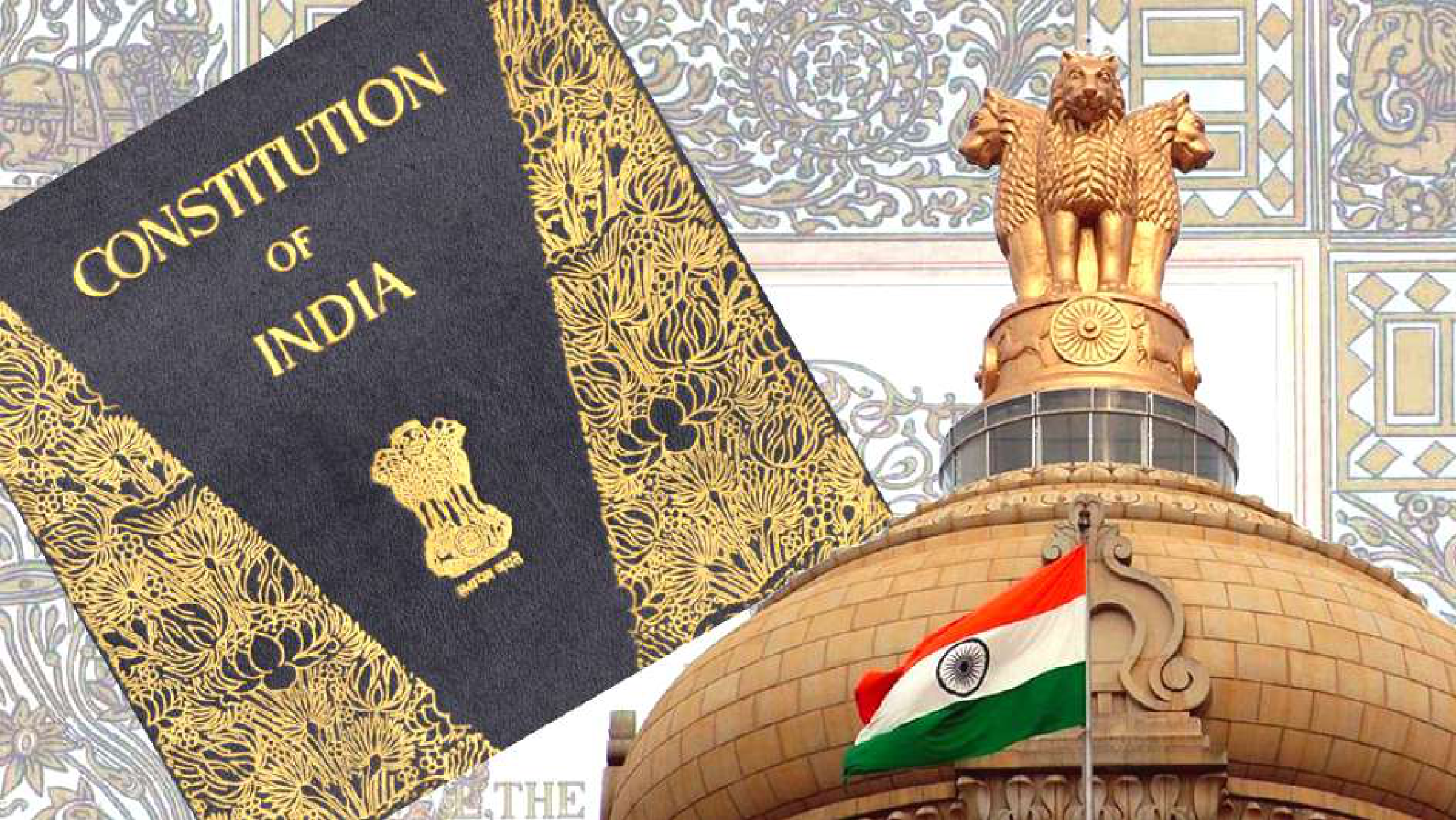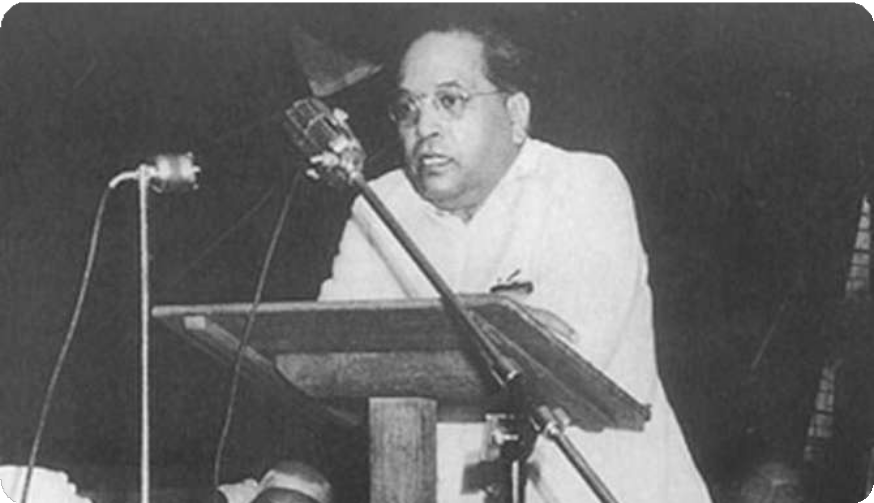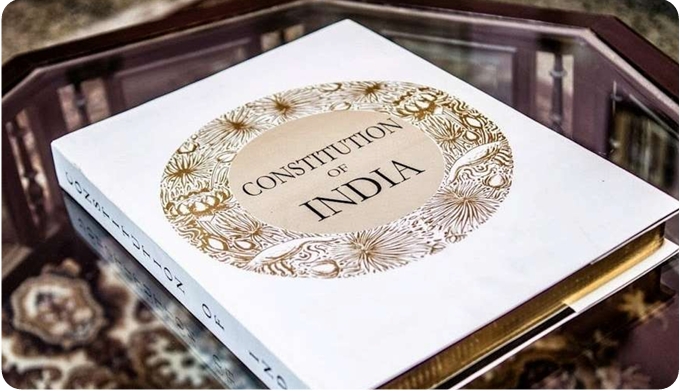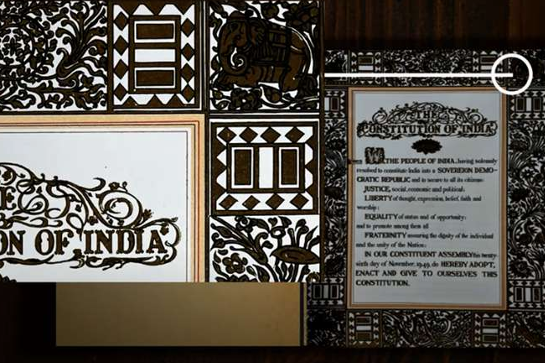“For over 30 years, India’s foreign policy evolved under a relatively stable constellation of circumstances… It provided a framework of reference which did not change too much from one year to the next. It provided a set of fairly unvarying certainties against which India could test the usefulness or otherwise of any policy option at a given point of time.” [1]
Introduction: why was 2014 a watershed?
Though domestic factors have had a significant influence on the trajectory of Indian foreign policy, the continuities of non-alignment had prevailed for the first three decades through changes in leadership and electoral vicissitudes. Since gaining independence, India has seen three distinctive electoral phases, as identified by political scientist Yogendra Yadav.
“Initially, from 1952, the Congress party dominated, while opposition remained fractured. However, in 1967, Congress faced significant state-level defeats, signaling the decline of its supremacy. The second phase, lasting from 1967 to 1989, witnessed Congress holding power in Delhi mostly but encountering challenges from regional, often caste-oriented parties in the states. Then, from 1989, a coalition-based political landscape emerged, marking the onset of the third electoral system. This system, spanning over 25 years, introduced key shifts: heightened national-level competition, tighter margins in parliamentary contests, increased influence of regional parties, stagnant national voter turnout, and a more decentralized electoral scenario. The 2014 election results, however, compel a reassessment of these principles.” [2]
In 2014, Narendra Modi and the Bharatiya Janata Party (BJP) emerged victorious. The BJP managed to win 282 of 543 seats in India’s lower house of parliament (the Lok Sabha), the first time a single party won a majority in three decades. The Congress tally, meanwhile, sunk to just 44 seats—down from 206 in 2009. In 2019, the BJP increased its seats in the Lok Sabha to 303, enabling it to bring major legislative changes. The BJP government led by Mr Modi has signalled a move away from even the rhetoric of non-alignment, with significant implications for the future of Indian foreign policy.[3]
By exploring how India has operationalized the policy, this article maintains that to some extent continuity will persist: India will likely continue its rhetoric of strategic autonomy while moving closer to the West and its allies in practice. Yet in order to effectively balance China’s growing influence, India will need to be more assertive in building these alliances, as the success of its pursuit of strategic autonomy rests on the strength of its strategic partnerships.
From Non-Alignment to Multi-Alignment: Redefining India’s Foreign Policy
Independent India was born in very difficult circumstances. Freedom came with the partition of the country. It was in this situation that independent India started on its journey to achieve several objectives, including in foreign policy. With the onset of the Cold War, Indian political figures were compelled to respond to the United States of America’s Policy of Containment (or the Truman Doctrine) under which the US would provide political, military, and economic aid to democratic countries under the threat of communist influences in order to prevent the expansion of communism.[4]
Prime Minister Jawaharlal Nehru responded to the Cold War rivalry by forging India’s foreign policy on the principles of Panchsheel, prioritizing mutual respect and peaceful coexistence. He actively engaged with the United Nations, advocating for decolonization and disarmament. On the world stage, Nehru played a pivotal role in establishing the Non-Aligned Movement, offering a path for nations to navigate the Cold War without aligning with any major power bloc. However, the Sino-Indian War in 1962 highlighted the need for strategic alliances and military modernization, leading to closer ties with the Soviet Union. Through these policies and engagements, Nehru laid the foundation for India’s emergence as a major player in international affairs, committed to global peace and cooperation.[5]
From the 1960s to the 1990s, India’s foreign policy navigated a complex web of wars, alliances, and internal shifts. The 1965 war with Pakistan over Kashmir highlighted the enduring tensions, while the Tashkent Declaration sought to mend ties. The USSR became a key ally, providing military and economic support, even as the US offered food aid through PL 480.
While India faced the shadow of China’s nuclear arsenal, pursuing its own weapons was neither feasible nor desirable. Instead, India chose avenues for diplomacy and restraint. Nehru’s 1954 “standstill agreement” echoed the Soviet proposal for a regional “no first use” pact, which was a step towards broader Asian nuclear disarmament.
The Comprehensive Test Ban Treaty (CTBT), born from decades of Cold War limitations, stood as a powerful tool – though not yet ratified – that India could champion, aligning with the US suggestion to address China’s nuclear concerns within regional agreements. By actively promoting CTBT ratification and advocating for transparency measures, India built trust and reduced tensions, paving the way for lasting peace efforts as envisioned by engaging in multilateral dialogues and prioritizing non-proliferation further strengthen this approach, demonstrating India’s commitment to a nuclear-free future without escalating the regional arms race. This path, rooted in diplomacy and historical precedents, offered a more sustainable and secure future for India in the face of China’s nuclear shadow. [6]
Indira Gandhi’s era saw significant developments. The 1971 war and creation of Bangladesh cemented India’s regional power status. The Indo-Soviet treaty solidified their close relationship, while India’s 1974 nuclear test sparked international concern. Gandhi also played a role in establishing SAARC[7], promoting regional cooperation, though she did not live to attend the first summit at Dhaka in 1985; that role was performed by her son, Rajiv.
Rajiv Gandhi’s time saw a continuation of the Soviet partnership, but also intervention in the Sri Lankan civil war. He implemented economic liberalization, laying the groundwork for the “LPG reforms” of the 1990s. Narasimha Rao’s tenure (June 1991 – May 1996) saw a shift towards economic liberalization and closer ties with the West emphasizing trade and foreign investment; at the same time his “Look East” policy launched in 1991 aimed to strengthen ties with Southeast Asia with the objective of developing political, economic and security co-operation with countries in Southeast Asia.
Rao’s “Look East” Policy was taken forward by PM I K Gujral (April 1997 – March 1998). Although Gujral was PM for less than a year, he is the only Prime Minister with a foreign policy approach identified with his name — the Gujral Doctrine, which guided relations with South Asian neighbors. The Gujral Doctrine consisted of five basic principles, as outlined in his Chatham House speech in London in September 1996:
“First, with the neighbours like Nepal, Bangladesh, Bhutan, Maldives and Sri Lanka, India does not ask for reciprocity but gives all that it can in good faith and trust. Secondly, no South Asian country will allow its territory to be used against the interest of another country of the region. Thirdly, none will interfere in the internal affairs of another. Fourthly, all South Asian countries must respect each other’s territorial integrity and sovereignty. And finally, they will settle all their disputes through peaceful bilateral negotiations.”[8]
Later, he explained in his autobiography: “The logic behind the Gujral Doctrine was that since we had to face two hostile neighbours in the north and the west, we had to be at ‘total peace’ with all other immediate neighbours in order to contain Pakistan’s and China’s influence in the region.”
It is good to remember, before becoming PM, Gujral had served as Foreign Minister for two terms. So, in June 1997, BIST-EC (Bangladesh, India, Sri Lanka, Thailand – Economic Cooperation) was formed which six months later was expanded to BIMST-EC to include Myanmar. With Nepal and Bhutan joining as full members in 2004, the organization was rechristened BIMSTEC (Bay of Bengal Initiative on Multi-Sectoral Technical and Economic Cooperation). Beginning with 14 priority sectors of cooperation, the number was reduced to a manageable seven during the Colombo summit of March 2022
Prime Minister Modi’s priority of strengthening relationships with neighboring nations, recognizing the pivotal role of peace in South Asia for India’s developmental agenda, is actually a continuation of India’s foreign policy in the neighbourhood. His proposal to introduce paradiplomacy suggests granting states and cities the autonomy to foster unique connections with other countries and regions, signaling a shift in India’s global engagement strategy.
The “Act East” policy prioritizes Southeast Asia, forging strong economic and security ties with nations like Vietnam and Japan. Closer to home, the “Neighbourhood First” approach rekindles relationships with South Asian neighbors, aiming for regional stability and mutual benefit. In the Indian Ocean, Modi counters China’s growing influence through maritime partnerships with Rim countries, while Project Mausam fosters cultural and trade linkages across the region.
Even the distant Pacific Islands witness India’s growing presence through the Forum for India-Pacific Islands Cooperation. Ultimately, Modi’s foreign policy seeks to position India as a regional and global leader, securing its strategic interests, fostering economic prosperity, and strengthening cultural ties across the globe.
India US relations – ups and downs
India’s relationship with the United States has been marked by periods of both tension and cooperation. During the Cold War, India’s non-alignment policy created distance, while the US saw it as too close to the Soviet Union. However, the 1970s nuclear test led to US sanctions, creating further strain. India and the United States shared certain key interests and perceived them alike. While some American observers, through misunderstanding, miscast India as an enemy ally, the general US view acknowledged India’s non-alignment. Moreover, India, unique among developing nations, embraced democracy, further solidifying its alignment with Western values.
The relationship began to thaw in the early 2000s, culminating in the landmark civil nuclear agreement, paving the way for closer ties and India’s inclusion in the international non-proliferation regime.[9]Since the 1990s, economic ties have flourished, making the US one of India’s major trading partners and a significant source of investment.[10] The aftermath of the September 11 attacks further strengthened cooperation on counterterrorism, with joint military exercises and intelligence sharing agreements solidifying the partnership.[11] In recent years, the two nations have actively pursued a “strategic partnership,” focusing on defense and security cooperation, with the Indo-Pacific region being a key area of collaboration.
From India’s perspective, the US relationship held strong appeal due to their extensive and fruitful people-to-people ties, exceeding those with any other industrialized nation. Trade relations also proved beneficial, occasionally surpassing those with the Soviet Union. Notably, India relied heavily on the US for high-tech imports, receiving critical food aid during times of hardship. Further bolstering the relationship were US-facilitated development loans and investments, crucial for securing foreign exchange despite their relative insignificance compared to India’s total development expenditure. Finally, the US served as a valuable counterweight to countervailing forces in the region, adding weight to the multifaceted benefits of a strong India-US relationship. [12]
In 2005, a transformative “global partnership” bloomed between India and the US. Leaders Singh and Bush pledged to strengthen ties across diverse sectors. The economic engine revved up with a CEO forum and a focus on infrastructure, trade, and knowledge sharing in agriculture. Energy security, cleaner technologies, and sustainable development received a boost. A global initiative tackled democracy-building and HIV/AIDS, while a new defense framework and disaster relief measures bolstered security. The US embraced India’s burgeoning civilian nuclear program, paving the way for future cooperation with safeguards and controls in place. This landmark agreement ushered in a new era of comprehensive US-India partnership, promising a future of shared prosperity and progress.[13]
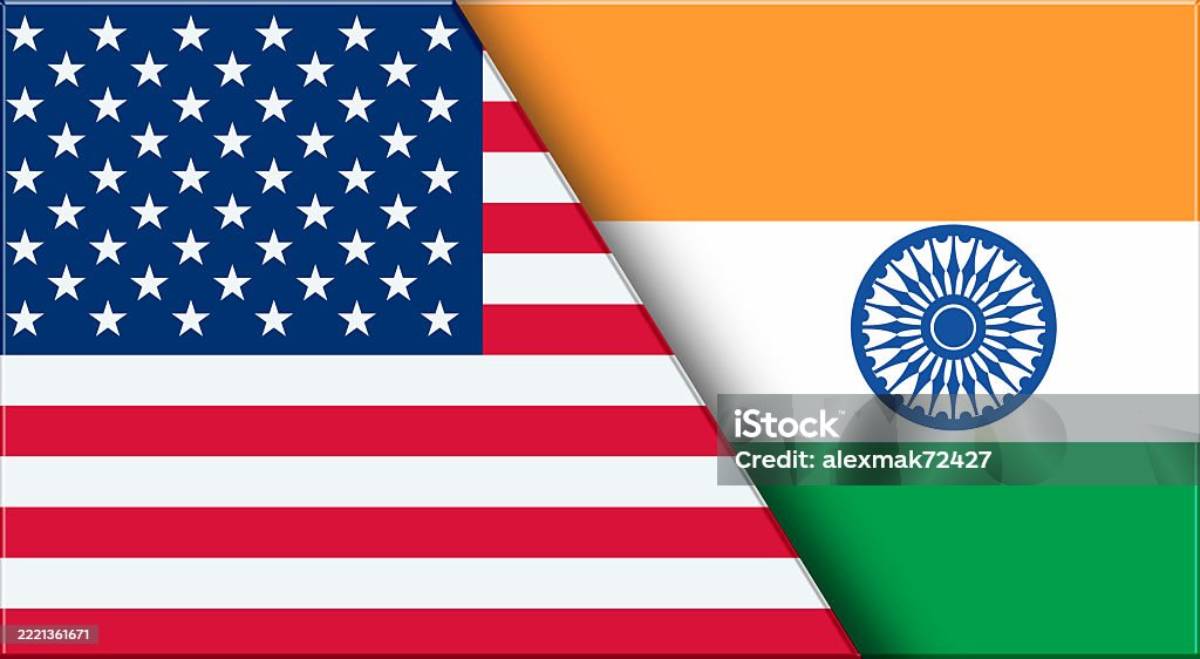
Prime Minister Modi’s US visit in June 2023 yielded a number of agreements across trade, security, and foreign policy. Trade received a major boost with US investments in India’s chip manufacturing and deeper maritime cooperation through the Indo Pacific Oceans Initiative. On the security front, defense deals for drones and jet engines solidified the US as a key partner, while the launch of ‘INDUS-X’ fostered closer defense industry collaboration. Space exploration cooperation reached new heights with India joining the Artemis Accords and agreeing to a joint human spaceflight mission. Even visa procedures eased with a pilot program for domestic H1B renewal. Despite looming concerns about democratic backsliding in India, Modi’s visit marked a significant stride in the progression of the US-India relationship.[14]
While several significant achievements in the Indo-US relationship in 2023, there were two incidents in the last quarter that revealed a lack of complete trust in this partnership. The Biden administration filed a chargesheet in a New York court naming an Indian official in a plot to kill a US national and a separatist Sikh leader on American soil. The very fact that the U.S. went ahead with the chargesheet on an alleged plot and at the same time has not taken any action against those responsible for the attack on the Indian consulate in San Francisco and openly issuing threats to top Indian diplomats in the US appears to be a clear reflection that a lot is required to be done when it comes to the “trust” and “confidence” between the two largest democracies of the world.
The year saw remarkable collaborations, such as the launch of the Critical and Emerging Technology (iCET) initiative and efforts to boost bilateral trade and investment. President Biden’s support for crucial deals and eased regulations highlighted a commitment to strengthening ties. Symbolic events like Modi’s rare State Visit and Biden’s participation at the G-20 Summit reinforced this bond, demonstrating joint success amid global challenges. Despite these strides, incidents toward the year’s end indicated that full trust in this partnership is yet to be achieved.
First, was open American support to the allegations made by Canadian Prime Minister Justin Trudeau about a “possible” link between India’s government and the killing of a pro-Khalistan separatist in Vancouver. In less than 100 days, the Department of Justice filed a damaging indictment in a federal court in New York saying that it had unearthed a plot to kill a US national on American soil. Though the separatist Sikh leader was not named, media reports identified him as Gurpatwant Singh Pannun, the leader of the Sikhs for Justice, an organisation banned in India.
India has denied the Canadian allegations and has repeatedly said that Ottawa has not shared evidence on the case. On the US indictment, India has instituted a high-level commission to probe the allegations. New Delhi is also not happy with the inability of the US to take action against those responsible for the attack on the Indian consulate in San Francisco and openly letting separatist Sikhs organise and propagate anti-India and Khalistani movements in the country. As such, what could have been easily a historic year in the India-US relationship, at best can be described as three steps forward and one step backward.[15]
Elements of Change and Continuity
Trade and Technology
Because of its own struggle against imperial and colonial powers during an earlier past, the Soviet Union was well inclined towards India’s growing role in the non-aligned and anti-colonial and anti-imperial movements. Among nations friendly with the Soviet Union, India stood out as the largest without a formal alliance or the fervent commitment expected of an ally. The Soviet Union became a good market for Indian manufactures. In the 1970s, there was a formal signing of an Indo-Soviet Treaty which was useful to deal with the US stance in favour of Pakistan. Defence and trade relations persisted despite the breakup of the Soviet Union. More recently, due to the Ukraine conflict, suddenly Russia needed buyers for its oil and India always needed a source of oil imports other than from the Arab countries.
India’s foreign policy is experiencing a paradigm shift, with technology evolving from a mere economic driver to a potent diplomatic instrument. Its strategic partnerships with tech giants like the US and EU, exemplified by initiatives like the U.S.-India iCET focusing on AI and 5G/6G collaboration, and the EU-India Trade and Technology Council (TTC) tackling trade-tech challenges, paint a vivid picture of this transformation. However, India’s ambitions transcend mere self-gain. Its active role in the Global Partnership on Artificial Intelligence (GPAI) and the International Research Center on Artificial Intelligence (IRCAI) underscores its commitment to ethical and inclusive AI development. Furthermore, India champions digital public infrastructure (DPI) as a key accelerator for Sustainable Development Goals (SDGs).
At present, trade relations are at a point of transition as technology and foreign policy increasingly intersect. Pervasive technological forces have brought radical social change, forced governments to innovate, and prompted new approaches for how governments and citizens interact. Catchphrases are emerging each day to describe this trend, like- ‘tech diplomacy or techplomacy’, ‘cyber diplomacy’, and ‘digital diplomacy.’ [16]
The G20 Digital Economic Ministerial Meeting under India’s presidency, which witnessed the ground-breaking consensus on DPI as an SDG enabler, stands as a testament to this leadership. This outward focus is also evident in India’s domestic endeavors. The establishment of specialized tech divisions within the Ministry of External Affairs, like the New Emerging and Strategic Technologies Division (NEST Division), demonstrates a proactive approach to navigating the complexities of emerging technologies. This internal expertise fuels India’s active participation in shaping global tech governance, as seen in its contributions to the development of standards and regulations for areas like AI and cybersecurity. However, India’s tech diplomacy faces challenges. Data privacy concerns linger in the wake of initiatives like Aadhaar, while concerns about digital divides within India itself highlight the need for balanced growth.[17]
In a speech to the nation on 12 May 2020, Prime Minister Modi announced his new concept of economic self-reliance (Atmanirbhar Bharat). Its historic roots lie in the Swadeshi movement, which advocated the preferential use of domestically produced goods and whose ideas are also reflected in the writings of the RSS. Albeit under different political conditions, India had already pursued a course of import substitution starting in the 1950s. At that time, the country was oriented towards socialist economic models and relied on a large state sector. Ultimately, by the time it ended in 1991, this policy only spurred an average growth of about 3.5 per cent.
Modi’s current concept, on the other hand, aims at privatising often unprofitable state-owned enterprises, commercialising agriculture and building up national business champions, for example, in the technology sector. Prominent critics, such as Modi’s former economic advisor Arvind Subramanian, object to this path, noting that no developing country after the Second World War has been able to achieve growth of more than 6 percent through domestic demand alone.[18] The policy of self-reliance is in line with the “Make in India” programme that was introduced in 2014, which aims to increase exports and reduce imports. [19]
India-China relations – tensions persist
India’s relationship with China boasts ancient cultural and economic ties, facilitated by the Silk Road. However, the 19th century saw British exploitation of opium trade between India and China, leaving a lasting mark on their relations. Both nations fought alongside each other during World War II, but the Cold War era saw India recognize the communist People’s Republic of China, while maintaining a non-aligned stance. China’s close ties with the Soviet Union during this period created further complexities. The 1960s witnessed border conflicts, including the 1962 war, which remain a source of tension.
Despite being India’s largest trading partner between 2008 and 2021, economic nationalism and ongoing border disputes continue to pose challenges. Despite 18 one-on-one meetings between Prime Minister Modi and President Xi Jinping, China’s support for Pakistan and the border disputes further complicate the relationship. Conversely, India’s increasing naval presence in the South China Sea and its hosting of Tibetan exiles raise concerns for China. The South Asian region has become a battleground for influence between the two Asian giants, with their rivalry shaping the region’s future. [20]
Prime Minister Modi’s emphasis on self-reliance represents a stark shift from historical policies, aiming to privatize unprofitable state-owned entities, boost agriculture, and foster national business champions, notably in technology.[21]India’s withdrawal from global trade partnerships, heightened tariff impositions, and increased restrictions on Chinese companies during border conflicts exemplify a protective stance aimed at safeguarding its economic interests. However, these actions underscore significant gaps in understanding global dynamics and emphasize the necessity for a more balanced approach in navigating international relations.
While Modi denounced growing global protectionism at the World Economic Forum in 2018, his government began raising tariffs against itself. In autumn 2019, New Delhi withdrew from the Regional Comprehensive Economic Partnership (RCEP) at the last minute on the grounds that its participation in the free trade project would further widen its chronic trade deficit with China. Indeed, during its border conflict with China in summer 2020, India’s government tightened its restrictions against Chinese companies.[22]
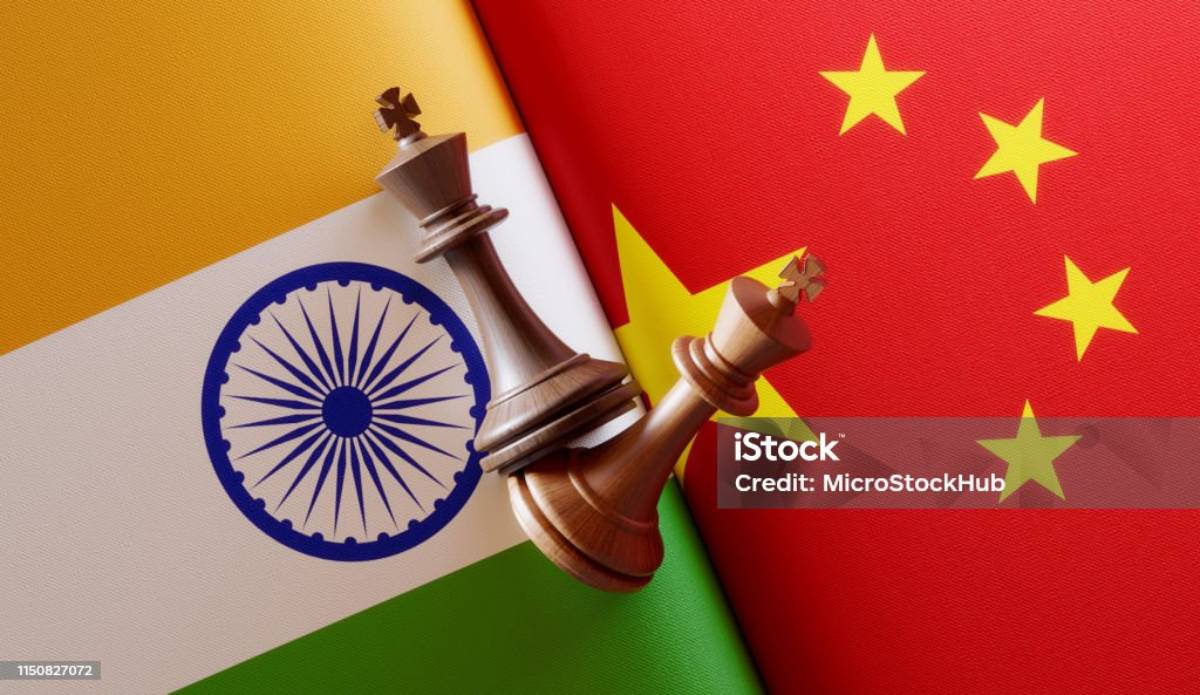
The Regional Comprehensive Economic Partnership (RCEP) was spearheaded by China as a comprehensive free trade agreement negotiated between the 10 ASEAN Member States and ASEAN’s free trade agreement (FTA) partners viz. Australia, China, India, Japan, Korea and New Zealand. India’s withdrew at the last moment in November 2019 from the negotiations of the RCEP – arguably the world’s largest trade bloc – because it had massive trade deficits with at least eleven of the fifteen RCEP countries, which had almost doubled after Mr Modi came to power.
It was stated that India wants voluntary economic initiatives like the Indo-Pacific Economic Framework, as opposed to restrictive trade deals like the RCEP, as that resonates with India’s self-reliance aspirations. Yet the trade imbalance with China and the ASEAN countries continues to grow. While bilateral trade deficit remains significant in 2023, India imposed new export controls targeting China, only to be toned down quickly due to tech dependency. This shows that India cannot define strategic ambitions far in excess of its technological and economic clout.
Departure from Earlier Policy Stances – Two Examples
Departing from the mantle of Nehruvian non-alignment, Modi has spearheaded the forging of strategic partnerships and actively engaging with key regions across the globe. However, foreign policy experts have argued that India’s once-dominant position in Asia is crumbling under the weight of Modi’s foreign policy failures. Island nations like Maldives feel empowered to snub their larger neighbor, while Nepal and Sri Lanka openly embrace China.
This stark reversal from India’s preeminent position, where its voice was sought on regional matters, stands as a testament to a foreign policy lacking clear objectives beyond promoting Modi’s own image. The absence of a coherent strategy has left India’s influence eroding rapidly, raising questions about its ability to navigate the complex geopolitical landscape of the region. [23]
India’s diminishing participation in summits like the Non-Aligned Movement and G-77, coupled with the reduced engagement in South-South cooperation over the past decade, underscores a departure from its prior active role in Global South activism. This shift, combined with economic challenges and a stance that often falls short of matching China’s assertiveness in global forums, contributes to India’s declining significance within the Global South.
While historically India and China have employed distinct strategies when engaging with the Global South, India had opted for established platforms like the G-20, Non-Aligned Movement, UN climate change conferences, G-77, and the UN General Assembly to advocate for the Global South’s positions. For instance, during the COVID-19 pandemic, India, alongside South Africa, approached the WTO to suspend intellectual property rights on vaccines, aiming to enhance access for low – and middle – income nations. In contrast, China creates alternative, China-led forums such as the Belt and Road Forum, Global Development Initiative, and others.
Chinese rhetoric often carries an implicit anti-Western and anti-American tone, rejecting hegemony and the US-led international order, diverging from India’s more moderate stance. However, India faces challenges, primarily in China’s rhetoric and economic influence attracting more support from the Global South than India’s softer critique of the international order. China’s assertiveness, coupled with its economic offerings, outweigh India’s limited resources for similar economic outreach. China’s official stance, criticizing global institutions and advocating for a more equitable globalization while emphasizing sovereignty (even amidst territorial disputes), resonates with many in the Global South disillusioned by perceived Western double standards. In contrast, India’s approach often falls short in matching China’s bold positions, lacking the impact of pointed rhetoric during emotionally charged global events.
India also grapples with its reduced engagement with the Global South over the past decade. A heightened focus on relations with the U.S. and the West led to a decline in South-South cooperation, marking a departure from India’s previous active role in Global South activism. This shift is evident in India’s diminishing participation in summits like the Non-Aligned Movement and G-77. India’s aspiration transcends its current Global South identity, aiming for inclusion among powerful states managing global governance. However, China’s intensified drive for influence and leadership in the Global South has prompted India to reassess its rhetoric, diplomacy, and policies.[24]
As of July 2023, India’s decision to ban the export of specific rice has garnered much criticism as it significantly impacts nations in Africa, Latin America, Asia, and the Caribbean, India’s export restrictions exacerbate existing challenges. The vulnerability of these nations to food inflation and supply disruptions intensifies due to reduced access to Indian rice varieties, potentially heightening food insecurity and escalating prices for millions reliant on these imports. This restriction on rice exports raises doubts about India’s commitment to global food security and its prioritization of domestic needs over international obligations. The interconnectedness of the world’s food systems is highlighted as the ban’s ripple effects prompt shifts in trade alliances and dependency patterns, potentially leading to a reassessment of India’s role as a reliable rice exporter in the Global South. [25]
India’s decision not to join the Arms Trade Treaty (ATT)
In 2013 India’s decision not to join the Arms Trade Treaty (ATT) reflects a complex interplay of strategic autonomy, domestic interests, regional considerations, and doubts about the ATT’s effectiveness. On the one hand, India asserts its strategic independence by retaining flexibility in acquiring weapons based on its own assessed needs, particularly in the shadow of its contentious relationship with Pakistan. This stance manifests in decisions like the $5.4 billion Rafale fighter jet deal with France in 2016, a move criticized by ATT proponents but deemed crucial by India for bolstering its air defense capabilities. However, domestic interests also play a crucial role. India boasts a burgeoning domestic defense industry, with concerns about its competitiveness impacting the ATT decision. For instance, India’s concerns over restrictions on technology transfer under the ATT were a key factor in its non-adherence. This focus on protecting domestic industry’s growth reflects its broader economic aspirations and desire to reduce dependence on foreign arms imports.
Furthermore, India argues that the ATT overlooks its specific security challenges, particularly those posed by non-state actors and terrorism. Critics, however, counter that the ATT provides tools for addressing these concerns through provisions like regulating brokering activities and preventing diversion of arms. India’s preference for bilateral agreements and existing mechanisms like the Wassenaar Arrangement highlights its skepticism towards certain international norms and its prioritization of tailored solutions for regional security issues. India’s stand on the ATT has yielded both potential benefits and drawbacks. While fostering strategic autonomy and safeguarding domestic interests, it has also raised concerns about India’s commitment to international arms control norms and its capacity to collaborate effectively with other countries on addressing shared security challenges. [26]
The I2U2 Grouping: A change in India’s strategic stance in the Middle East
From the shores of the Arabian Sea to the plains of North Gujarat, a novel quartet is drawing curious glances. The I2U2 grouping, comprising India, Israel, the United Arab Emirates (UAE), and the United States, presents a unique platform for cooperation in fields ranging from agriculture to renewable energy. But beyond the immediate projects lies a deeper significance for India’s foreign policy and its global aspirations. First, I2U2 offers a tangible manifestation of India’s burgeoning economic ties with the UAE. The initial $2 billion investment and tech assistance for Indian agriculture, targeted at states like Gujarat and Madhya Pradesh, stand as a model for future capital flows. Coupled with Israeli and American expertise, this unlocks new possibilities for development and innovation.
Moreover, I2U2 acts as a catalyst for the ongoing normalization of relations between Israel and the UAE, a process India has historically supported. With closer ties between Jerusalem and Abu Dhabi, India’s own strategic partnership with both nations finds further reinforcement. Notably, Prime Minister Modi has shed the hesitance of past generations, openly embracing Israel’s crucial role as a supplier of military technology. While the balancing act in West Asia, particularly with regards to Iran, remains a delicate dance, I2U2 provides a valuable diplomatic tool to navigate the region’s complex waters.
Perhaps the most significant aspect of I2U2 lies in its unique framework for engagement with the United States. Unlike formal alliances or junior partnerships, I2U2 presents a stage for cooperation based on mutual respect and India’s “strategically autonomous” stance. The I2U2 is not merely a collection of projects, as it embodies a strategic convergence that aligns with India’s foreign policy priorities: fostering economic growth, deepening regional partnerships, and carving out its own space on the global stage. While challenges remain, I2U2 offers a promising avenue for India to solidify its position in the Middle East.
Shifts in Style and Substance
Foreign policy recalibration and shift in strategic focus
India’s foreign policy in the 21st century navigates a delicate dance between continuity and change, evident in both style and substance. While the core principles of strategic independence and moral leadership remain constant, the way India engages with the world is undergoing a dynamic transformation. On the one hand, India is shedding its “rule-taker” image, actively shaping the global agenda through platforms like the G20 Summit and COP26. The “Integrated Framework” sheds light on the intricate balancing act behind India’s negotiating positions, ensuring national interests are protected while maximizing international leverage. Case studies like the TRIPS Agreement reveal both victories and challenges in navigating complex trade negotiations.
Beyond trade, India’s voice is resonating on critical issues like climate change. From pioneering the “Panchamrit” action plan to advocating for “Common but Differentiated Responsibilities,” India is moving from highlighting “lifestyle emissions” to leading the charge for a sustainable future. This assertive yet principled approach, exemplified by its stance on the Ukraine-Russia conflict, showcases India’s strategic agility and commitment to moral leadership. In essence, India’s foreign policy metamorphosis transcends mere style. It’s a substantive shift from cautious defense to proactive shaping, from rule-follower to rule-shaper. This “sui generis” approach holds immense potential for India to not only secure its own interests but also contribute meaningfully to a more equitable and sustainable world order.

The future beckons, and India, with its evolving style and unwavering substance, is poised to claim its rightful place as a leading force on the global stage. India, once a regional hegemon and a champion of non-alignment, finds its foreign policy in flux. Under the Modi government, the country has joined numerous new formations, yet struggles to revive the once-vibrant South Asian Association for Regional Cooperation (SAARC). BIMSTEC and BBIN, while promising, fall short of encompassing the entire region. Even the Non-Aligned Movement (NAM), a cornerstone of India’s Cold War identity, has seen its engagement wane, with the Modi government’s outreach efforts targeting similar countries through alternative channels.[27]
This strategic shift from non-alignment to a nebulous “multi-alignment” leaves India’s position in an increasingly polarized world unclear. The government walks a precarious tightrope, navigating the pitfalls of a “please-all” approach that risks pleasing none in the long run. This ambiguity extends to its foreign policy principles, oscillating between pragmatism, realpolitik, and transactionalism without a clear, guiding framework.
China’s rise poses a significant challenge, not just bilaterally but across the subcontinent. Every Indian neighbor, except Bhutan, is now part of the Belt and Road Initiative (BRI), attracting unprecedented levels of Chinese investment and trade. Even Bhutan, long considered a close Indian ally, has engaged with Beijing in unprecedented ways to resolve their border dispute. This stands in stark contrast to India’s own stalled progress with China, with key objectives like NSG membership and UNSC reform remaining elusive.[28]
Mr Modi’s personalized summit-level diplomacy, once touted as a key strength, has also faced limitations. The failure to anticipate and prevent the 2020 LAC incursions, despite numerous high-level engagements, raises questions about its effectiveness in managing complex geopolitical situations. While the government’s efforts to repatriate Indians stranded abroad are commendable, the case of Kulbhushan Jadhav in Pakistan highlights the limitations of diplomacy without cooperation. International judgments hold little sway without it, as evidenced by the lack of progress in Jadhav’s case and similar situations involving Indian nationals in Qatar, Pakistan, and elsewhere.
While Mr Modi’s visit to Nepal was mildly successful, his meeting with Prime Minister Sushil Koirala didn’t produce the expected agreements—the Power Trading Agreement and the Project Development Agreement were notably missing outcomes. Though a minor setback, it marked a disappointment. Similarly, the visit to Japan resulted in a substantial investment commitment of $35 billion.
Despite the close rapport between Mr. Modi and Prime Minister Shinzo Abe, often characterized as a “bromance,” the anticipated signing of the nuclear agreement between the two nations did not materialize. Despite spending considerable time together in Kyoto and official meetings in Tokyo, the divergence between Japan’s expectations and India’s assurances on nuclear testing remained unbridged. Despite hopes pinned on this visit, the much-anticipated nuclear deal remained elusive. Additionally, other expected agreements like upgrading the strategic dialogue format, securing a deal for US-2 amphibian aircraft, and advancing the commercial agreement for exporting rare earth minerals faced obstacles in the final stages of negotiations.
Critics, exemplified by a scathing article in the Japan Times titled “Showmanship trumps substance during Modi visit” by analyst Jeff Kingston, termed the visit as inconclusive showmanship. However, Indian commentators were more forgiving, acknowledging that many outcomes might unfold over subsequent months and years. Some solace was found in Australian Prime Minister Tony Abbott’s visit, which resulted in a nuclear deal for Uranium imports. The subsequent challenge arose during Mr. Xi’s visit. Despite the initial warmth displayed during his visit and the symbolic image of both leaders seated together on a swing in Ahmedabad, Mr. Modi’s aspiration for a shift in India-China discourse didn’t materialize.
Incidents at the border overshadowed the discourse, and efforts to achieve a stand down of troops failed despite extensive discussions along the Sabarmati Riverfront and in Delhi’s official Hyderabad House. One of the drawbacks of this summit-focused diplomacy lies in Mr. Modi’s extensive international engagements, stretching himself thin. Additionally, a centralized foreign policy approach often catches the Ministry of External Affairs off-guard, necessitating rapid responses to implement decisions. This pace, combined with a shortage of officers in the MEA, results in reduced preparation and limited follow-up capabilities.[29]
Staking a Claim to Leadership of the Global South
Speaking at Hudson Institute, a think tank in Washington DC on the topic of ‘India’s Role in a New Pacific Order,’ Jaishankar said India aims to reorder the world not with a ‘pull down the pillars’ approach, but with a reformist mindset where India would add a non-Western layer to the existing world architecture.[30] In discussing “re-globalization”, he highlighted the evolving nature of the current model over the past 25 years, pointing out that India’s presence and activities have notably increased in the east, extending into the Pacific and beyond. He noted that India’s heightened contribution to shaping a Pacific order reflects an ongoing process of rebalancing. “This rebalancing is driven centrally by the United States’ altered capabilities, positioning, and attitudes,” he clarified. “It is also a complex process influenced crucially by the rise of China and its far-reaching implications.”[31]
Jaishankar delved deeper into the simmering discontent within several countries regarding the global economic structure. He highlighted a pervasive sentiment of resentment brewing over the last couple of decades, exacerbated by events such as the COVID-19 pandemic and the Ukraine conflict, leading to surges in energy and food prices. Countries increasingly felt exploited as mere resources fueling the economy of other nations, although he was careful not to lay the blame solely on the West. He was emphatic that his stance wasn’t in support of the West, shedding light on the complexities of today’s globalization, emphasizing how manufacturing concentration, often bolstered by subsidies, detrimentally affects diverse economies. India, however, stands out in manufacturing, agriculture, scientific achievements like the Chandrayaan-3 mission, and successful vaccination drives.
These accomplishments have fostered a strong sense of identification among the Global South, including the African Union, as India embodies the potential for growth and progress. Moreover, Jaishankar discussed India’s impactful stewardship during its presidency of the G-20 Summit. He highlighted achievements such as steering influential nations toward a trajectory of growth and development and directing attention toward initiatives focused on the Global South. Jaishankar voiced apprehensions about Canada’s political sheltering of the Khalistan group, highlighting the potential threats posed by such allowances on the global stage.[32]
A recent instance highlighting this disparity emerged during the election for a Vice President’s position on UNESCO’s Executive Board held on November 24. Surprisingly, Pakistan secured a significant victory with 38 votes to India’s 18, despite its internal turmoil with a caretaker government and a struggling economy, not to mention its continued association with extremist ideologies and terrorism. India’s loss by such a wide margin was unexpected given Pakistan’s current state.
“.. the Ministry of External Affairs which is responsible for all aspects of India’s external engagements, should have read the tea leaves of this election better. This is .. because it opens up questions… on India’s efforts’ efficacy with countries of the Global South.” [33]
Moreover, this setback isn’t an isolated incident. India faced challenges in key diplomatic matters, such as the unsuccessful extradition of Devy, a Danish national involved in an arms case, and apparent lapses in effectively handling the case of Italian marines, raising concerns about the tracking of the legal proceedings, both in Rome and domestically. [34] There was a recent incident where eight former Indian Navy personnel working in Qatar ere charged ith spying and sentenced to death. It took adroit diplomacy and a meeting by the Prime Minister with the Emir of Qatar to get this death sentence commuted. [35]
India’s expanded presence and engagements towards the east, alongwith its emphasis on “neighborhood first” policy has been marred by domestic policies and a perceived “muscularity” that alienates neighbors. The Citizenship Amendment Act (CAA) angered Pakistan, Afghanistan, and Bangladesh, while the abrogation of Article 370 in Kashmir strained relations with Pakistan and border roads construction strained relations with Nepal. Similarly, the Akhand Bharat terminology and domestic policies have met with pushback from Maldives and Sri Lanka, indicating a disconnect between the government’s regional aspirations and its execution.
Conclusion
In September 2014, Modi visited the US and addressed the Indian diaspora in New York’s Madison Square Garden. He also held talks with Former US President Barack Obama and his “diplomatic showmanship” made headlines in India as well as in the US. In the following years, Modi developed a close working relationship with Obama. After Donald Trump became America’s president, India-US ties continued to flourish, with New Delhi and Washington sealing several trade and defense deals and undertaking joint military exercises. Modi’s diplomacy equally charmed the European Union. The Indian prime minister visited Berlin and Paris in 2015 and held talks with German Chancellor Angela Merkel and Former French President Francois Hollande. In France, Modi managed to break the deadlock over the sale of 36 Rafale fighter jets.
The rise of Modi heralded a distinctive approach to the emergence of a new India, marking a significant shift in the country’s narrative. Modi’s leadership persona took precedence as he adeptly maintained an image of tirelessly striving to modernize India and elevate its global standing. This begs the question of can India ever be taken “seriously” as Mr. Modis’ rhetoric projects it to be “atmanirbhar” and highlights India as a vishwaguru. As Abhijnan Rej a former Senior Fellow of the Observer Foundation, New Delhi, and Rahul Sagar, a faculty member of the New York University wrote:
“[In the absence of the cultivation of strength], Modi’s vigorous and pragmatic outreach to other countries around the world and his emphasis on civilizational values as a driver of Indian foreign policy ring hollow, privileging optics over substance.” [36]
The erosion of India’s influence in South Asia, the domestic factors hindering regional cooperation, and the unresolved border dispute with China, all raise concerns about the country’s ability to navigate the complex geopolitical landscape of the 21st century. Moving forward, India must prioritize a coherent foreign policy strategy that balances its own interests with those of its neighbors and the broader international community. Only then can it reclaim its position as a leader of the global south.[37]
References:
[1] Pran Chopra (1991) Foreign Policy in a Changing World, Economic and Political Weekly, Vol. 26, No. 14 (Apr. 6, 1991)
[2] https://carnegieendowment.org/2014/06/10/new-era-in-indian-politics-pub-55883
[3] India’s ‘non-alignment’ conundrum: a twentieth-century policy in a changing world
[4] https://history.state.gov/milestones/1945-1952/truman-doctrine
[5] https://carnegieendowment.org/2019/04/04/bjp-and-indian-grand-strategy-pub-78686
[6] https://www.proquest.com/openview/7128c64b2504afcebc7897e6fef5f0dc/1?pq-origsite=gscholar&cbl=18750&diss=y
[7] Though the idea was first mooted by then Bangladesh President Zia-ur-Rehman with the Indian PM Moraji Desai during his visit in 1977, following up with his letters in May 1980 to the Heads of Government of the countries of South Asia, presenting his vision for the future of the region and the compelling arguments for regional cooperation in the context of evolving international realities.
[8] https://indianexpress.com/article/explained/explained-politics/what-is-gujral-doctrine-significance-9049011/
[9] https://carnegieendowment.org/2022/09/20/russia-and-india-new-chapter-pub-87958
[10] https://www.economist.com/asia/2019/06/29/india-presents-america-with-a-choice-between-geopolitics-and-trade
[11] https://www.brookings.edu/wp-content/uploads/2021/01/FP_20210111_us_india_white.pdf
[12] ibid.
[13] https://www.cfr.org/timeline/us-india-relations.
[14]https://www.thehindu.com/news/international/us-india-set-to-announce-deals-across-multiple-domains-during-modis-state-visit/article66996997.ece
[15]https://www.thehindu.com/news/national/india-us-relationship-in-2023-three-steps-forward-one-step-back/article67671436.ece
[16] https://southasianvoices.org/the-tech-moment-in-indias-foreign-policy/
[17] https://southasianvoices.org/the-tech-moment-in-indias-foreign-policy/
[18] https://www.swp-berlin.org/10.18449/2021C30/.
[19] https://dam.gcsp.ch/files/2y10NglVtodrmscPeADoEPMuu59qGSGn3rBtYW6cOndix7QEZaYZjlO
[20] http://in.china-embassy.gov.cn/eng/xwfw/zgxw/201507/P020210622243188059948.pdf
[21] http://20.244.136.131/expert-speak/to-convert-atmanirbhar-bharat-into-reality-modi-needs-to-wage-a-war-69171
[22] https://dam.gcsp.ch/files/2y10NglVtodrmscPeADoEPMuu59qGSGn3rBtYW6cOndix7QEZaYZjlO
[23] https://timesofindia.indiatimes.com/blogs/truth-lies-and-politics/a-critical-review-of-foreign-policy-of-india-since-1947-part-ii/
[24] https://www.foreignaffairs.com/china/how-thwart-chinas-bid-lead-global-south
[25]https://economictimes.indiatimes.com/news/economy/foreign-trade/view-india-cant-lead-the-global-south-and-not-feed-it/articleshow/102153288.cms
[26] https://dam.gcsp.ch/files/2y10NglVtodrmscPeADoEPMuu59qGSGn3rBtYW6cOndix7QEZaYZjlO
[27] https://pib.gov.in/PressReleaseIframePage.aspx?PRID=1895858
[28] https://www.thehindu.com/opinion/lead/indian-diplomacy-non-alignment-to-multi-alignment/article13982580.ece
[29] https://www.thehindu.com/opinion/op-ed/limits-of-summitstyle-diplomacy/article6450200.ece
[30]https://thewire.in/diplomacy/india-is-non-western-not-anti-western-jaishankar-calls-for-re-globalisation
[31] https://thewire.in/diplomacy/india-is-non-western-not-anti-western-jaishankar-calls-for-re-globalisation
[32] https://www.thehindu.com/news/national/need-to-get-over-syndrome-that-west-is-the-bad-guy-says-s-jaishankar/article67320584.ece
[33] https://www.ksgindia.com/study-material/today-s-editorial/todays-editorial-23-december-2023.html
[34]https://indianexpress.com/article/opinion/columns/why-despite-deft-diplomacy-india-did-not-get-a-seat-at-the-unesco-table-9079558/ ,
[35] https://indianexpress.com/article/explained/qatar-commutes-death-sentence-indian-navy-veteran-9086293/
[36] Abhijnan Rej, Rahul Sagar. (2019) The BJP and Indian grand strategy . https://carnegieendowment.org/2019/04/04/bjp-and-indian-grand-strategy-pub-78686
[37] https://indianexpress.com/article/opinion/columns/india-diplomacy-mohan-kumar-indias-moment-hardeep-singh-puri-9071705/



